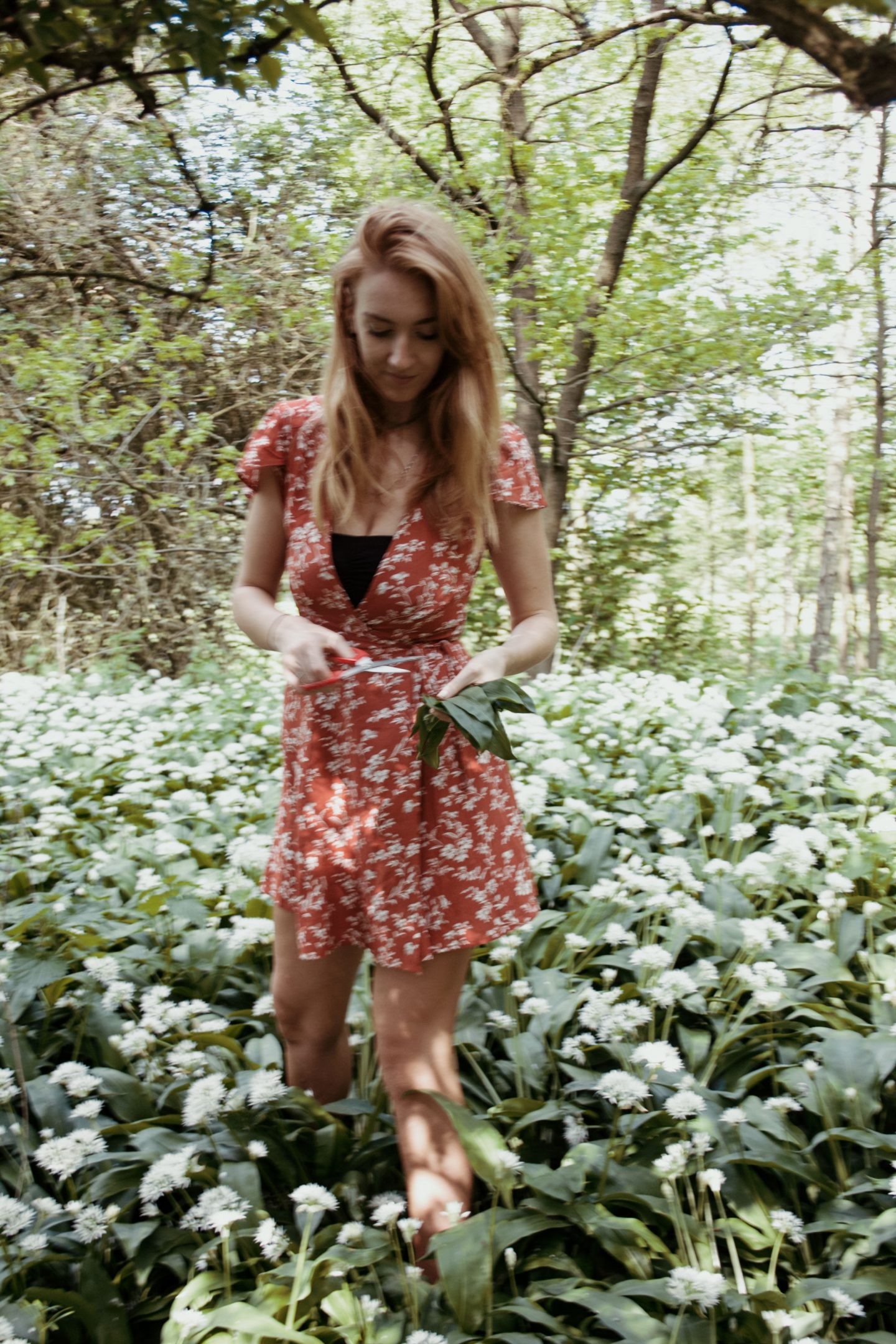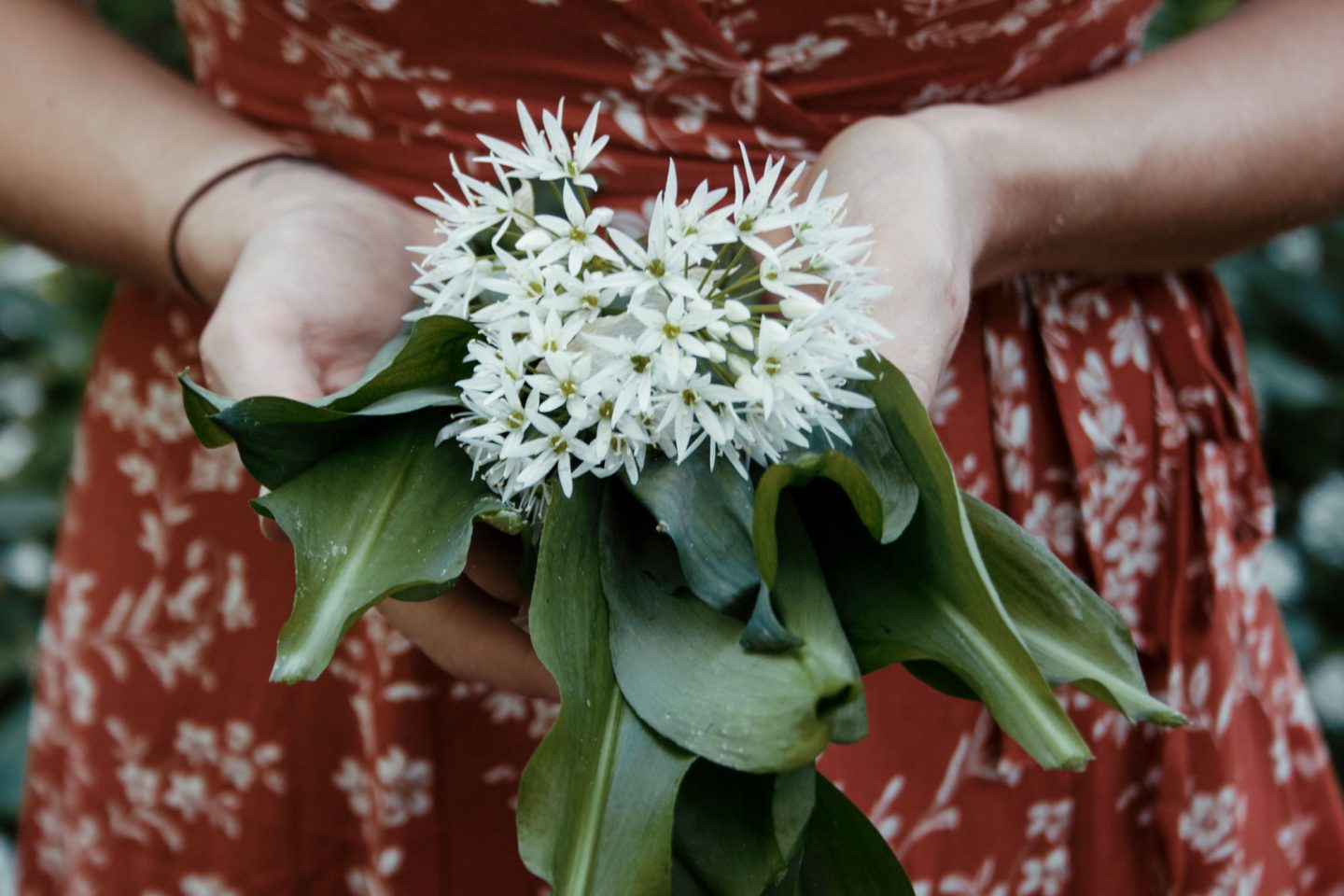
I’m a little late to post about foraging wild garlic – but we’ve had such a wet spring here in England that most of the season has been a wash out. Last week I went to an old haunt of mine and was pleasantly surprised to find carpets of it everywhere, the white flowers looking like clouds beneath the trees. Wild garlic is up there with blackberries for a popular and tasty foraging treat. It’s versatile in cooking, easy to identify and has no poisonous look-a-likes. It grows like a weed (weeds are just flowers growing in the wrong place, right?) and you can smell it before you see it! It tastes like a mild form of normal garlic, and can be used in everything from pestos and dips to fresh salads. It’s one of my faves.
Where does it grow?
Almost everyone can forage wild garlic, as it grows all over the country. It starts in January and continues to bloom until the end of May. Old, damp woodlands are usually best, and I always find it grows well with bluebells, probably because they like the same soil. It likes riverbanks, and especially copses of trees near riverbanks. Once you’ve found it, you’ll know it. It grows far and wide, taking over the soil with its dark green leaves. It’s white flowers emerge from April to June and are just as delicious as the rest of the plant!
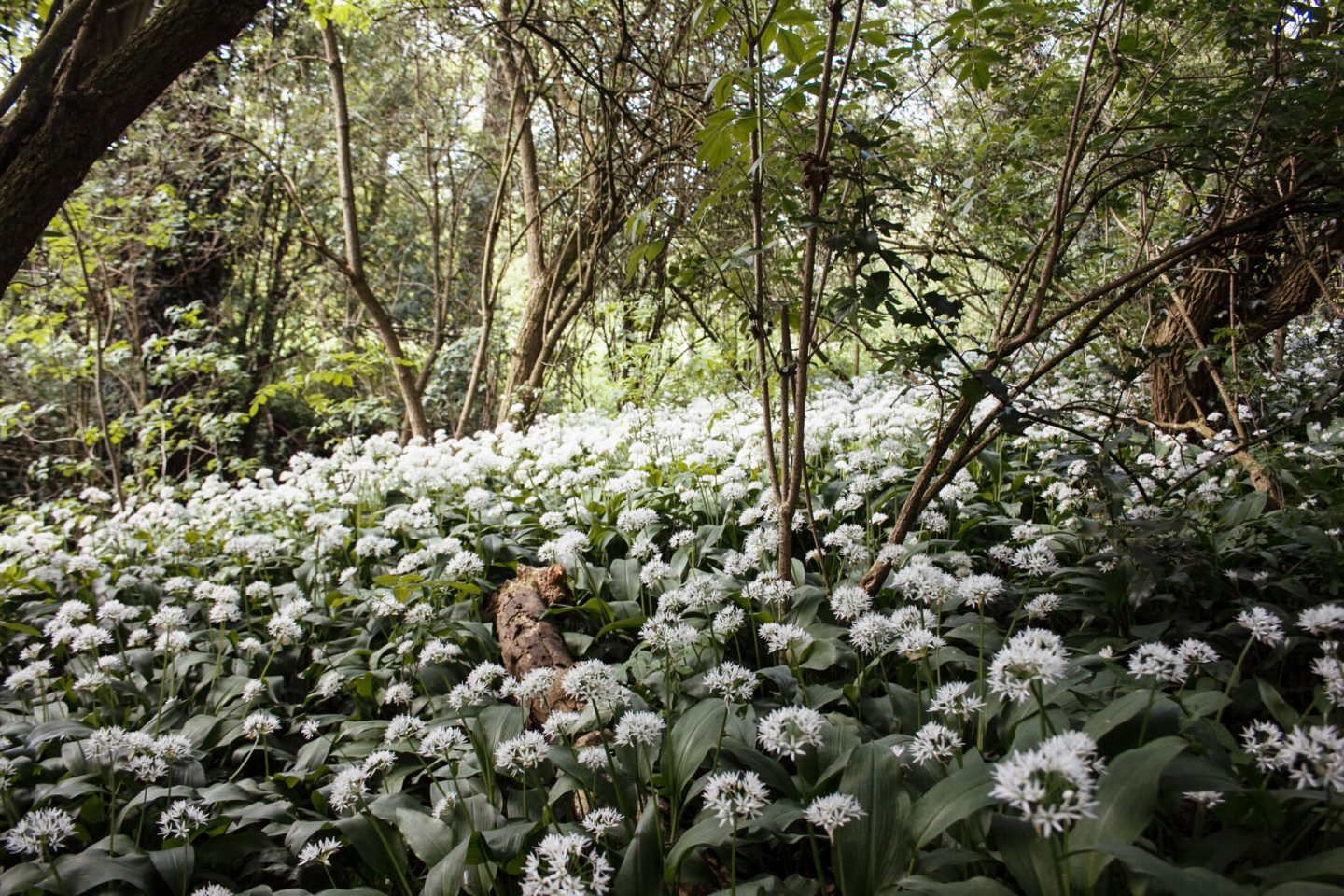
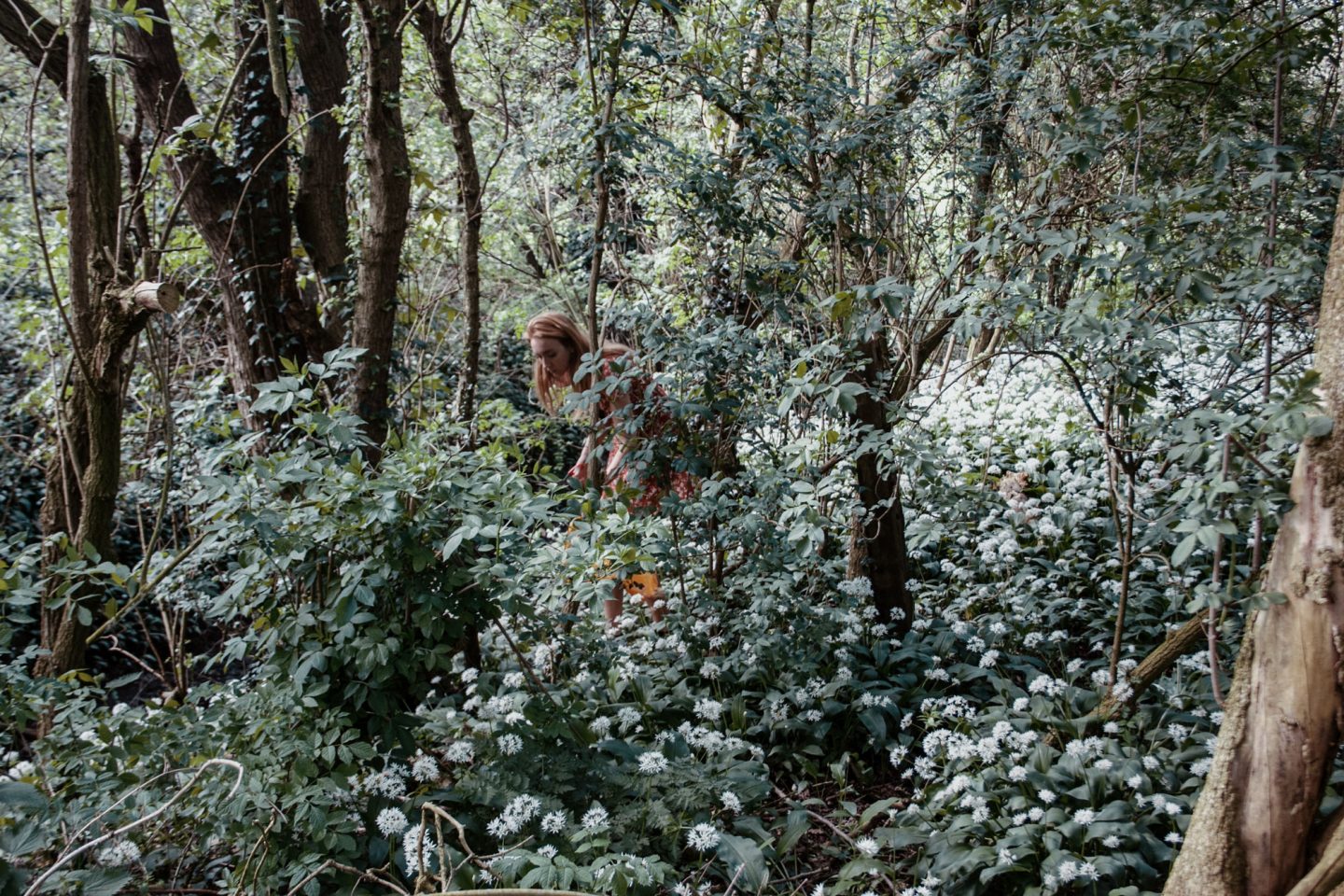
Identifying Wild Garlic
If you’re ever in doubt as to whether a plant is wild garlic or not – give it a smell! It always has a strong smell of actual garlic, and as it grows in huge swathes, you’ll probably be bombarded by the scent whether you like it or not. Saying that, it’s worth noting that it can look similar to Lily of the Valley, which is a leafy plant with bell-like white flowers. This is poisonous, so be 100% sure that it’s wild garlic you’re harvesting. The Lily of the Valley doesn’t grow in carpets like wild garlic, and its flowers look like little bells, unlike wild garlic flowers.
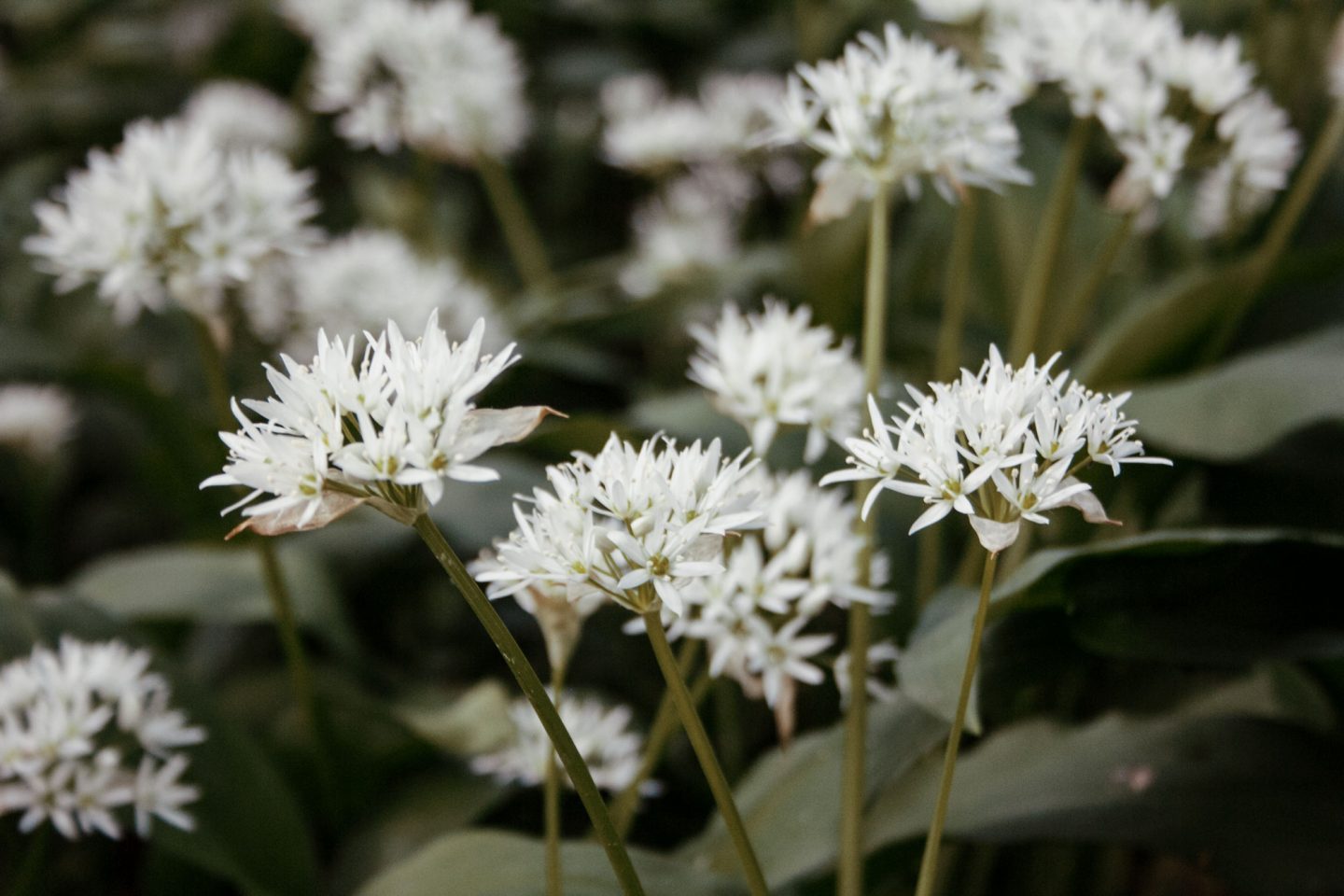
Harvesting Wild Garlic
Unlike the garlic you’re probably used to, you don’t eat the bulbs of wild garlic. Instead, it’s the leaves and the flowers that are edible. They have a milder taste than traditional garlic bulbs too. Avoid the edges near paths and trees etc, as you don’t want a side of dog pee with your wild garlic pesto. Instead, head towards the middle of the carpet, cutting away the leaves near the bottom of the stem. Only trim 1-2 leaves per plant, and leave an area when you’ve clipped around 5 plants. It’s really important to harvest responsibly and not leave a large area bare of plants! Watch out for bird poo on leaves, and try and clip the younger leaves as these will taste the best. If you’re harvesting when the flowers are in bloom, feel free to pick a few of these. They are just as lovely to eat.
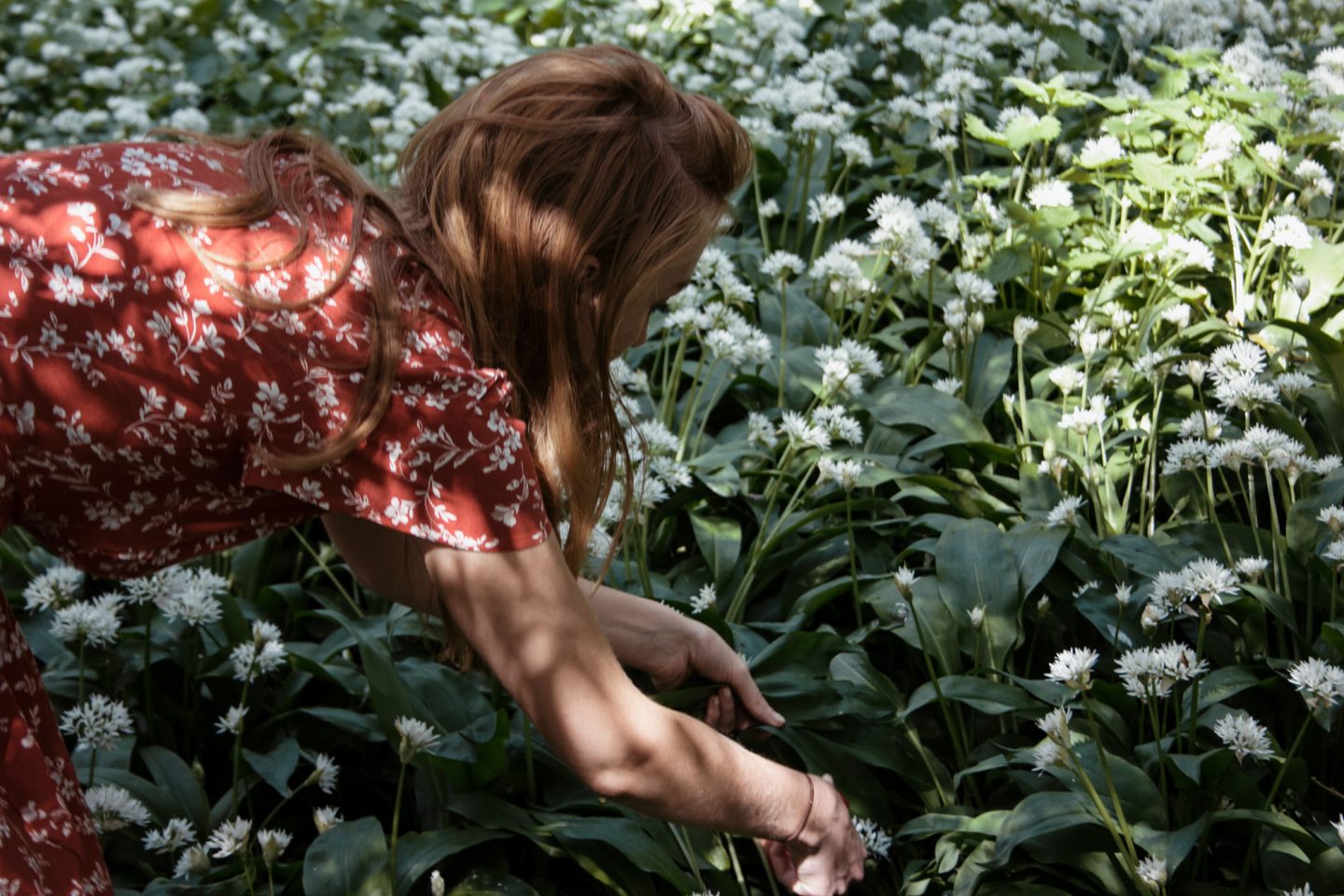
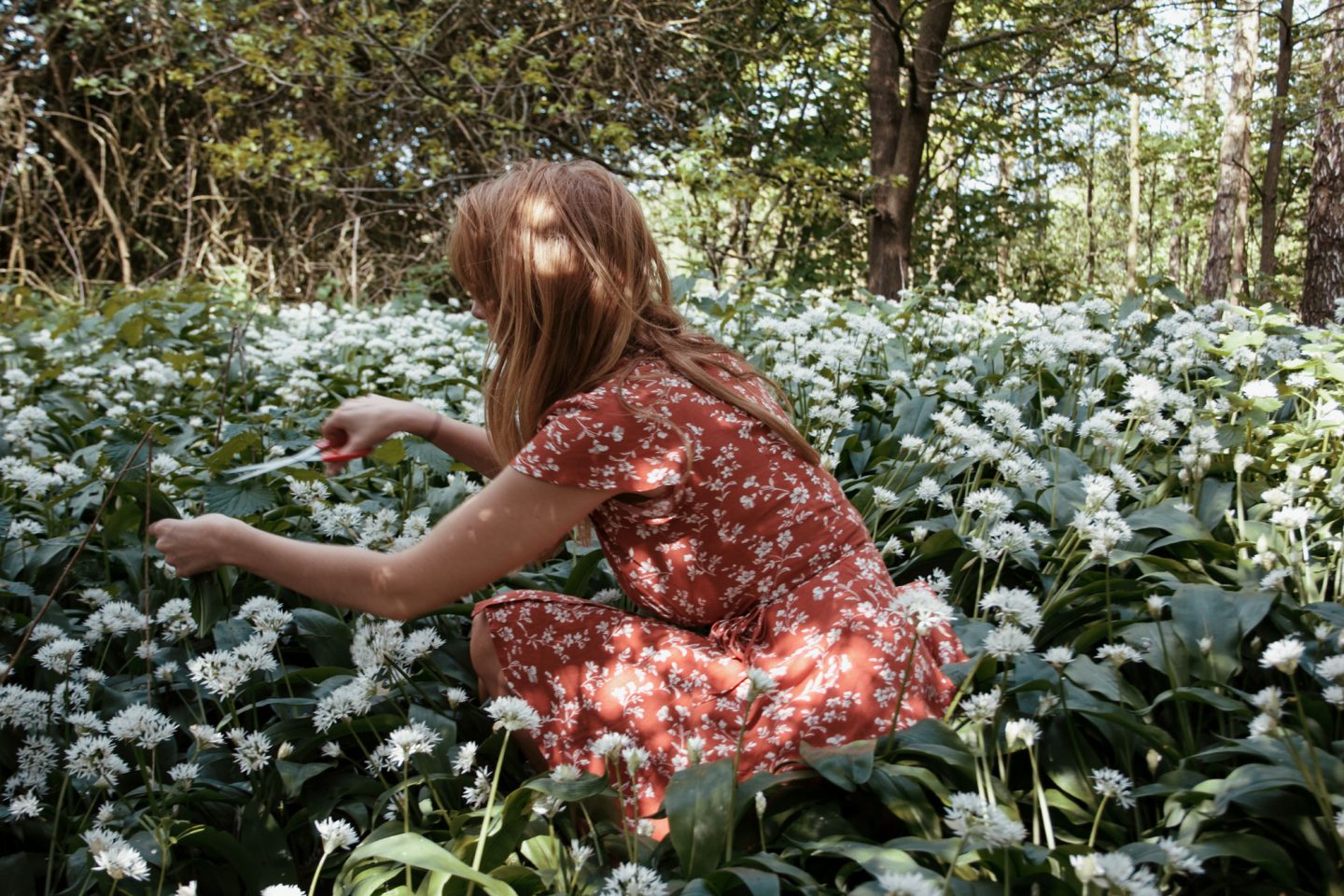
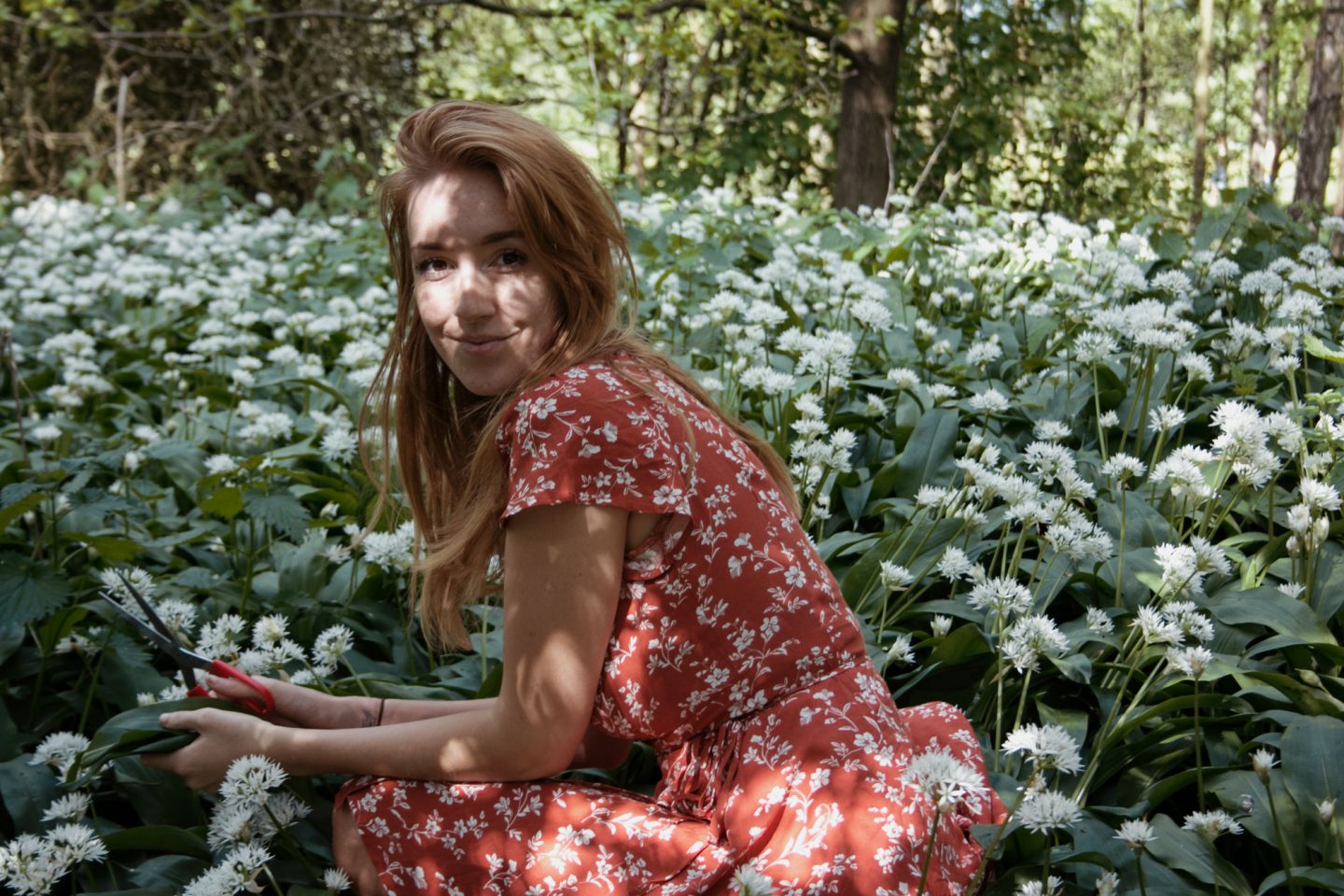
How to Use Wild Garlic
There are a million recipes for Wild Garlic pesto but it’s so good it’s definitely worth giving a try. Blend up the leaves with some toasted pine nuts, olive oil, lemon juice and some nutritional yeast (or parmesan for a non-vegan version). Add this to pasta or as a dip, it has a mild flavour that’s so fresh and tastes of the countryside in Spring. You can also make it into a soup, add the leaves to a salad, or as a side dish in your main dinner. It’s worth mentioning it has loads of health benefits too! Wild garlic is really high in vitamins A and C, is antiviral and also has been shown to reduce blood pressure. There’s still some time left this year to go harvest some, so what are you waiting for?
